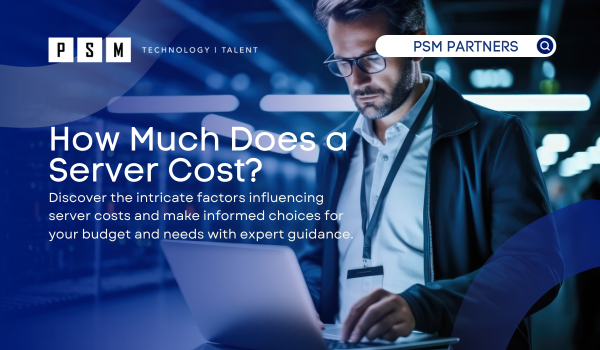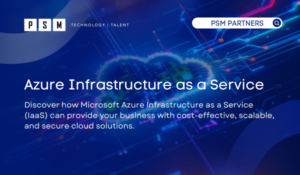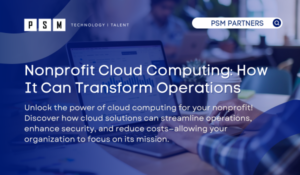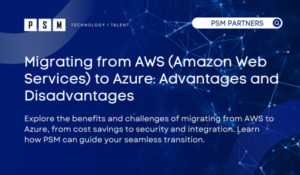Table of Contents
ToggleThe cost evaluation of a server is a multi-faceted task, influenced by a multitude of factors. If you’ve ever inquired about server costs and received a swift response or a vendor’s quote, it’s probable that these responses were based on certain assumptions, which may not accurately match your unique requirements. Moreover, they may have overlooked various critical considerations essential for your future budget planning. Rather than providing a straightforward answer, let’s delve into the intricate web of factors that play a pivotal role in determining your server costs.
Determining Hardware Requirements for Your Server
Many organizations are opting for a cloud-first approach, leveraging Software as a Service (SaaS) solutions that do not require servers to be implemented by IT. However, if you are asking this question, you’re doing a cost comparison between a SaaS solution and deploying your own implementation of the same application, or you’re implementing a solution that requires at least something to run on a server in your environment. In any case, the application(s) that will be running on this server will have some requirements, and the vendor for this software should be able to provide you with some minimum and recommended specifications for the hardware requirements of your server based upon your use case for their application. Start here first to help guide you on the appropriate hardware requirements for your server. Leverage any presales discussions you can with their knowledgeable sales engineers to help plan appropriately. These specifications will answer the questions about how much compute (memory and processing power) is needed, as well as how much storage is required. There may also be additional considerations for things like High Availability, network throughput, and storage speed (IOPS) noted depending upon how robust the application is. You may find that you need more than one server, and each server has unique requirements.
Choosing the Optimal Server Environment: On-Premises or in the Cloud
Once you’ve determined the hardware requirements, the next question to consider is where will the server be installed? If you are starting with a complete blank slate and this is your first server, you have a lot of options. If you have other existing servers in your environment like most companies, though, you will typically follow the existing infrastructure standards you have in place and build a server that follows in line with them. In any case, it’s always worth validating the right approach when a new server is needed.
The most basic questions for where your server will be located are: Will this server need to be a standalone physical server, or will it be a virtual server (VM)? And for a VM, will the server be living in a public cloud like Microsoft Azure, or do you have your own private cloud with a Hypervisor in your own network such as VMware vSphere or Microsoft Hyper-V?
If you have your own private cloud, the next steps are to determine whether you have enough compute and storage available in your hypervisor environment to meet the specs of the software running on your server, or if you need to add capacity. If you do, then your costs will certainly be lower. If you do not, then your new server costs will be tied to increasing your capacity accordingly.
If you wish to deploy the server in a public cloud such as Azure, then you can directly review what the costs will be with Microsoft using their calculators to deploy a new VM in Azure to meet your needs. Since there are many factors and options available here and you will be paying a monthly cost to Microsoft to run the server, spending some time with a consultant to help guide you to the most cost-effective solution that meets your needs is often a great investment to save yourself a lot more over the lifetime of the server. Otherwise, you may find that your costs quickly grow higher than you anticipated.
If you will be deploying a physical server in your own datacenter, outside of the hardware specs that the software vendor has supplied, some additional things to consider are that you will need to ensure that you have ample power (primary power as well as battery backup), cooling, networking connectivity, as well as physical space in a locked, restricted room for the server. A server will need to be running 24×7 and usually contains sensitive company information on it, so physical access restrictions are needed. The costs of maintaining these things in your own facility often shifts companies towards the cloud, where companies like Microsoft handle this for you much better than your company can. Your uptime will almost certainly not match the uptime they will provide, and it’s one very important thing you would not have to worry about so that you can focus on running your core business instead.
Managing and Maintaining Your Server: Ongoing Responsibilities
If you’re only considering the cost of buying server hardware when budgeting for a new server, then you aren’t considering the whole picture. To keep your server up and running and doing its job for your company as long as you’ll need it to do so, there are going to be many ongoing costs tied to managing and maintaining it. One key thing to consider here is that you will need to back the server up. If you already have a backup system deployed, does it have enough licenses and storage capacity to add the new server, or will you need to purchase more of either? If you don’t have a backup system, you will need one. The backup system could be an appliance or cloud service, or another server on your network running backup software, but it needs to be running and stored on something completely separate from the server you are buying to avoid catastrophic failures or ransomware on your server destroying the data irrevocably. In addition to backups, you’ll need to consider your Disaster Recovery Plan (DRP), and how this will factor into your costs for adding another server. If you don’t have a DRP yet, you will need one.
Finally the effort of maintaining the server – installing OS and application patches at a minimum, potentially also firmware updates if it’s a physical server, monitoring it for availability or performance issues and then remediating failures when they arise – these can either be soft costs of additional time spent by your IT team, or direct costs to a Managed Services Provider (MSP), but in either case, they should absolutely be considered. No server runs on its own forever, and if you don’t patch it, then it’s a security liability.
And finally, if you do end up buying a physical server, be sure it comes with the appropriate support contract from the Original Equipment Manager (OEM). The key things to consider here are how long you can wait for the server to be offline due to hardware failure. It’s often advisable to get a 24×7 contract where the OEM will replace failed hardware within 4hrs. If the server isn’t performing a critical function, though, you can save costs by stepping down to a contract where the OEM will only replace parts via advance shipment, however, the server would be offline until a part can be shipped to you. And once the initial terms of the maintenance contract expire, they will need to be renewed at a cost. Most MSPs will require you to have a valid OEM support contract on all hardware, as without this their hands will be tied should you experience a hardware failure.
Making the Right Server Choice for Your Budget and Needs
If you find yourself facing challenges when trying to pinpoint the perfect server solution that aligns seamlessly with your budget and specific needs, don’t hesitate to get in touch with our team of seasoned experts. We are dedicated to providing you with invaluable guidance, ensuring you make the optimal selection tailored to your precise requirements. Your server choice is a critical decision, and we’re here to help you make it with confidence.
Related Insights
What is Azure Infrastructure as a Service?
In the increasingly competitive digital age, one-way businesses can stay...
Read MoreNonprofit Cloud Computing: How It Can Transform Operations
Nonprofits face many challenges in their day-to-day operations, including limited...
Read MoreMigrating from AWS (Amazon Web Services) to Azure: Advantages and Disadvantages
Cloud technology has become an important part of the IT...
Read MoreAbout the Author

Caitlin Bergsma
Caitlin is an accomplished Marketing professional with an unwavering enthusiasm for the dynamic world of the IT industry. Caitlin's journey in the field began after earning her Bachelor's degree in Health Communications from Trinity Christian College, where she honed her skills and developed a keen eye for identifying market trends.




